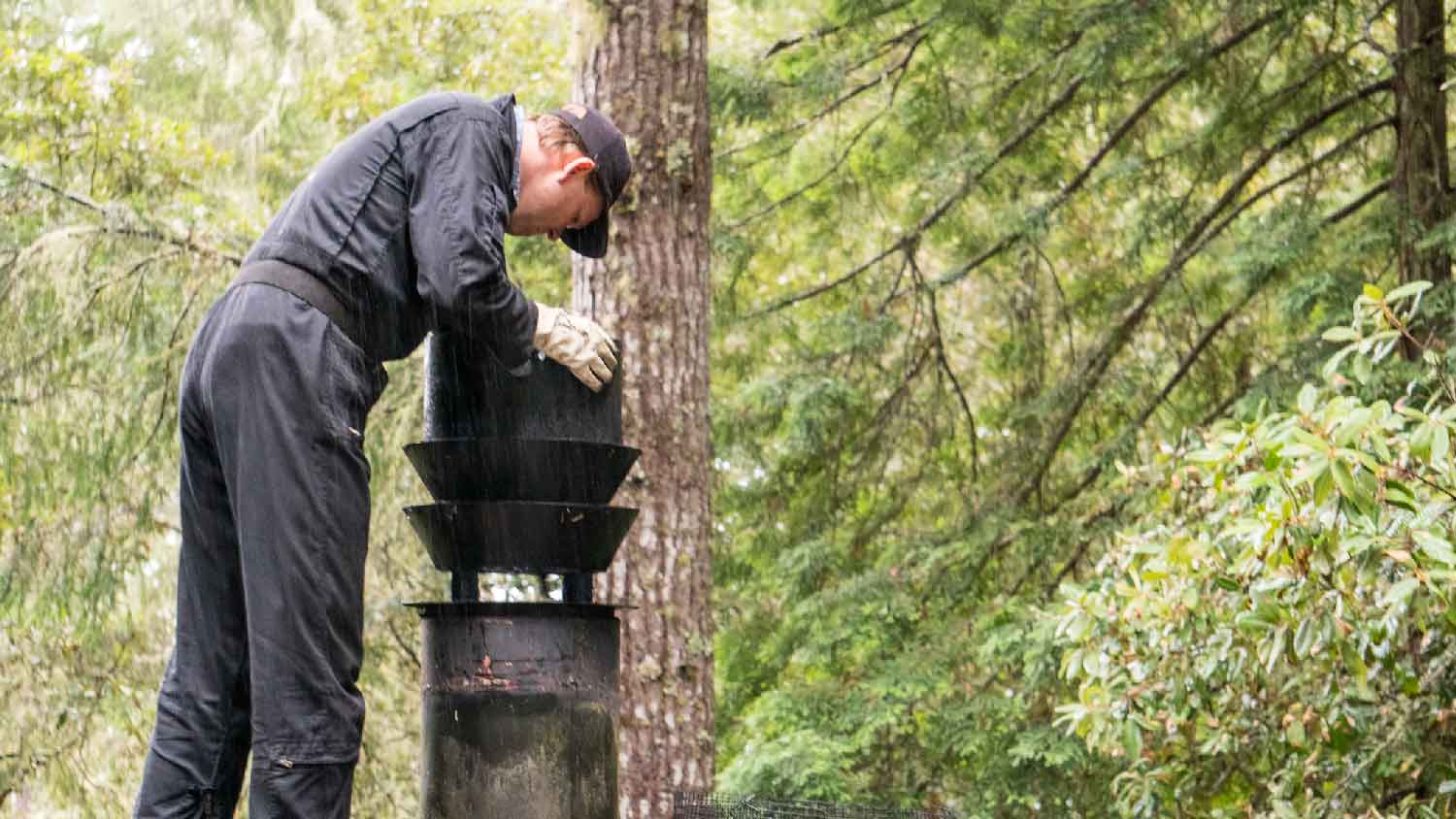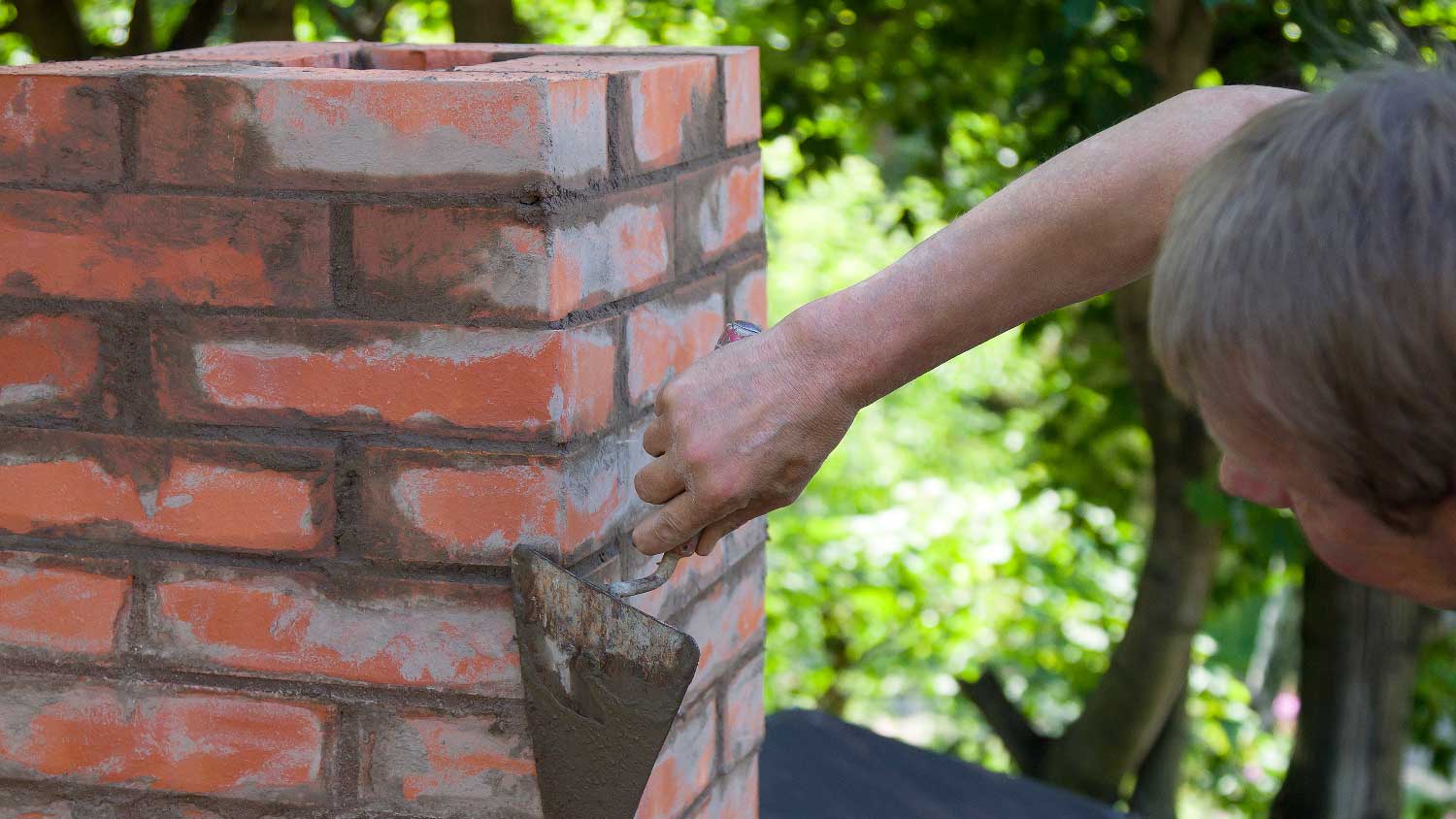
The average cost to repair or replace a chimney crown depends on the damage, material, and any other chimney maintenance services bundled into your project.
It’s not hard to tell if your flue is open—but unless you can breathe smoke, it sure is important


If you try to run your fireplace with a closed flue, you’re going to have a rough time—namely, smoke will fill your living room, leaving behind a coughing crowd and a campfire scent that may not come out of your upholstery for weeks. On the other hand, if you leave your flue open all the time, you might see higher gas and energy bills since your HVAC system will be working hard to heat or cool the neighborhood. So how can you tell if the flue is open?
If you don’t know, this is a pretty easy problem to fix! Here’s what you need to know to get your next cozy fireside night on in peace.
A fireplace flue is also known as a chimney damper and is the gadget that seals your chimney shut to the outside air when you aren’t using your fireplace. This prevents air-conditioned or heated air from escaping your home when the fireplace is not in use.
Of course, the flue is also used to vent smoke when you are using your fireplace, which is why it can be opened in the first place. Anyone who’s ever tried to start a fire with a closed flue knows exactly how important this piece of equipment is.
So if you’re preparing to start a fire, you need to ensure your flue is open—and if you’re done with your fireplace for the season (or even just the evening), closing the flue will help keep your home as efficient as possible and drive your energy bills down.
So, how can you tell which position it’s in? There are a few different options.

Without further ado, let’s find out if your flue is open or closed.
The first step is the simplest: Just take a look! Literally put your head into your fireplace (while it’s not in use, of course!) and take a look skyward. Depending on the type of flue you have, you may actually see daylight coming in from the top of the chimney, or an open metal tube that you can see daylight through. If the tube is closed or you can’t see daylight, your flue is likely closed—or in need of serious unclogging. (Note: You may need to use a flashlight for this step.)
Another way to tell if your flue is open or closed is to feel with your hand inside your fireplace for a draft, especially if it’s chilly outside. Since an open chimney damper will allow outside air in as well as inside air out, feeling a draft in your otherwise heated home is a surefire way to tell if your flue is open.
Although the specific controls you have will vary depending on what kind of chimney damper setup you have, you can play around with them to get a sense for whether the flue might be open or closed. For example, some types of fireplace flues utilize a cable that you have to pull to open the flue, while others use a rod, a knob, or another method. Combine this step with either the visual check or feeling for a draft to learn which setting is which with your flue, and then, in the future, you’ll be able to tell which position it’s in simply by checking the controls.
If you’re still not sure whether or not your fireplace flue is open, we do not recommend starting a fire to find out. Even a small fire can lead to serious health hazards when smoke backs up and fills your home. It’s better to hire a professional to help you than to put your lungs on the line.

Keeping your flue in proper, working order is one important part of maintaining a healthy fireplace—but it’s not the only one! Here are a few more tips to keep in mind:
Keep it clean: While ash and soot will almost assuredly accumulate in your fireplace over time, keeping the area clean will help keep the space in proper, working order for longer—and, more importantly, keep harmful tar vapors from condensing on the walls, which can cause decreased air quality or even a chimney fire. That’s why it’s important to have your chimney professionally cleaned at least once a year, along with giving it a good sweep after each fire.
Use a chimney liner: A flexible tube that connects to your stove pipe or which lines your fireplace chimney and helps drive smoke up and out of your home, a chimney liner, also known as a flue liner, can increase the efficiency of your fireplace and keep it cleaner for longer. A new chimney liner costs about $2,500 to install, but when cared for correctly and regularly cleaned, it should last between 15 and 25 years.
Still not sure if your flue is open or closed—or need help with another fireplace-related task? Your local chimney inspector can help!
Francis was awesome! Extremely professional and willing to resolve issues. I truly appreciated his hard work and will definitely use his company for my future projects.
Professional, courteous and great quality. Would hire the team again.
Doug did an outstanding job. We contacted him back in July (based on his reviews on Angie's List)-- because we needed some carpentry work done at our home in Westhampton Beach. He was on time (actually arrived early for our first meeting), reliable, a pleasure to deal with and most of all his...
From average costs to expert advice, get all the answers you need to get your job done.

The average cost to repair or replace a chimney crown depends on the damage, material, and any other chimney maintenance services bundled into your project.

Discover the average chimney tuckpointing cost, key price factors, and expert tips to help you budget and save on your next chimney repair project.

Chimney liners are important for fire safety and energy efficiency in your home. Learn how much chimney liners cost based on type, size, material, and other factors.

A chimney liner helps make your fireplace safer and more efficient. Here’s a closer look at who can install a chimney liner.

The process of how to paint a brick chimney comes with a few important caveats, but it’s definitely a worthwhile project to keep your brick strong and in good shape.

The chimney is an essential but easy-to-overlook decision when building or renovating a house. Here are the pros and cons of the main types of chimneys.